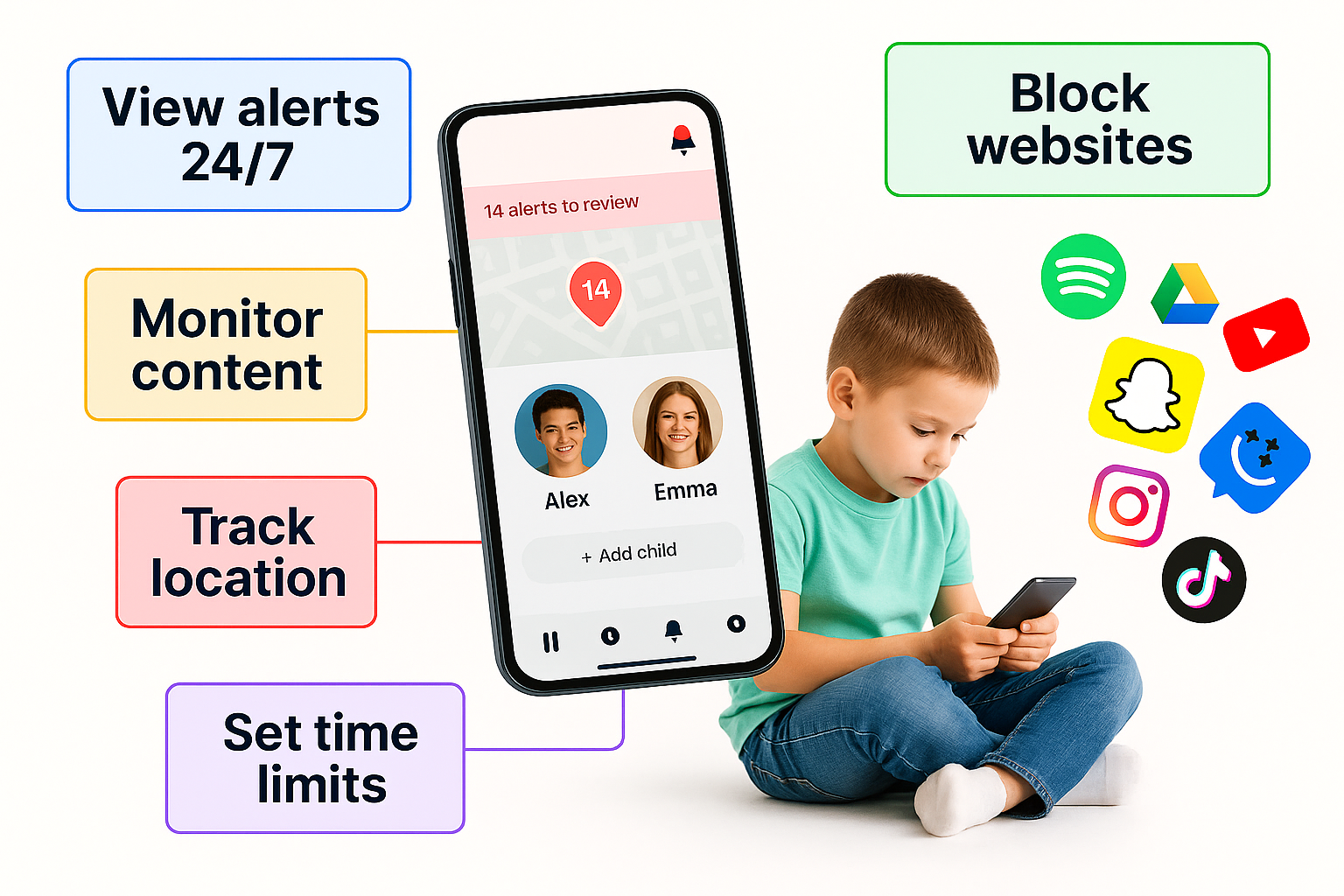☀️ A Parent’s Turning Point: How We Reclaimed Mornings by Changing Our Kids’ Phone Routine
Mornings used to be chaos in our house.
Alarms snoozed. Breakfast untouched. Shoes missing.
And my 12-year-old son, Ethan? Eyes glued to his phone before brushing his teeth.
Every day started with frustration — until we realized it wasn’t just bad habits.
It was bad digital rhythm.
Once we changed how our mornings began — by reshaping Ethan’s kids’ phone routine — everything shifted: focus, mood, and even our family connection.
☕ The Morning Struggle Many Parents Know Too Well
If you’ve ever shouted “Put your phone down!” before school, you’re not alone.
According to a 2024 Family Tech Habits Report:
- 68% of parents say their child checks their phone within 10 minutes of waking.
- 59% say phones make mornings longer and more stressful.
- 83% want to reduce screen time before school — but don’t know where to start.
Phones are designed to grab attention instantly. Before kids even eat breakfast, they’re hit with notifications, dopamine surges, and emotional reactions that hijack their energy for the day.
🧩 The Wake-Up Moment
The breaking point came when Ethan missed the bus — again.
Not because he overslept, but because he was stuck watching a YouTube short while eating cereal.
That morning, I decided:
No more phone chaos before school.
But instead of banning it completely (which never works), I tried something smarter — structure.
📱 The 3-Step “Morning Reset” Routine That Worked
Step 1: “No-Phone Zone” Until Ready Time
We made a deal — no phone until after breakfast and teeth brushing.
To enforce it, we used Parental Control Scheduling on his kids’ phone.
It automatically locked apps between 6:30–7:30 AM, except the alarm and music.
Result: zero nagging, zero battles.
Step 2: Replace Screen Scrolling with Music or Podcasts
Instead of social media or short videos, Ethan picked a kids-friendly morning playlist and a short motivational podcast.
He still had tech — but it was purposeful.
Now he hums songs while getting dressed instead of fighting for “five more minutes.”
Step 3: Rewards That Reinforce Routine
Every morning he stayed on track, he earned 10 minutes of extra phone time in the evening.
Positive reinforcement works better than punishment — especially with kids learning digital discipline.
🌞 The Results After Two Weeks
- No missed buses.
- Breakfast finished on time.
- A calmer, happier start to every day.
Even better, Ethan now reminds me to set our phones down at breakfast.
“It’s easier to talk without screens,” he said one morning.
That’s when I knew — we’d turned tech into teamwork.
🧠 Why It Works (The Psychology Behind It)
Mornings are the brain’s “prime time.”
Exposure to social feeds and alerts right after waking floods the brain with stress hormones — cortisol and dopamine.
When you delay phone use by just 30–60 minutes, kids start their day grounded, not overstimulated.
Structured use of a parental-controlled kids’ phone helps reinforce that healthy boundary — automatically.
🔒 Tools That Make It Easy
Modern kids’ phones with parental controls make digital routines effortless:
- Morning Lock Mode: disables non-essential apps before school.
- Scheduled Screen Time: lets parents define when apps wake up.
- Reward Mode: grants extra minutes for good behavior or chores.
- Family Dashboard: tracks usage and focus trends.
It’s not about control — it’s about calm.
The goal isn’t to take away your child’s phone — it’s to take back your mornings.
When you combine structure, trust, and tech that respects both, family life gets simpler.
Because a peaceful morning isn’t luck — it’s design.
So tomorrow, try this:
Put the phone to sleep until the day begins — and watch the difference.

